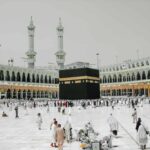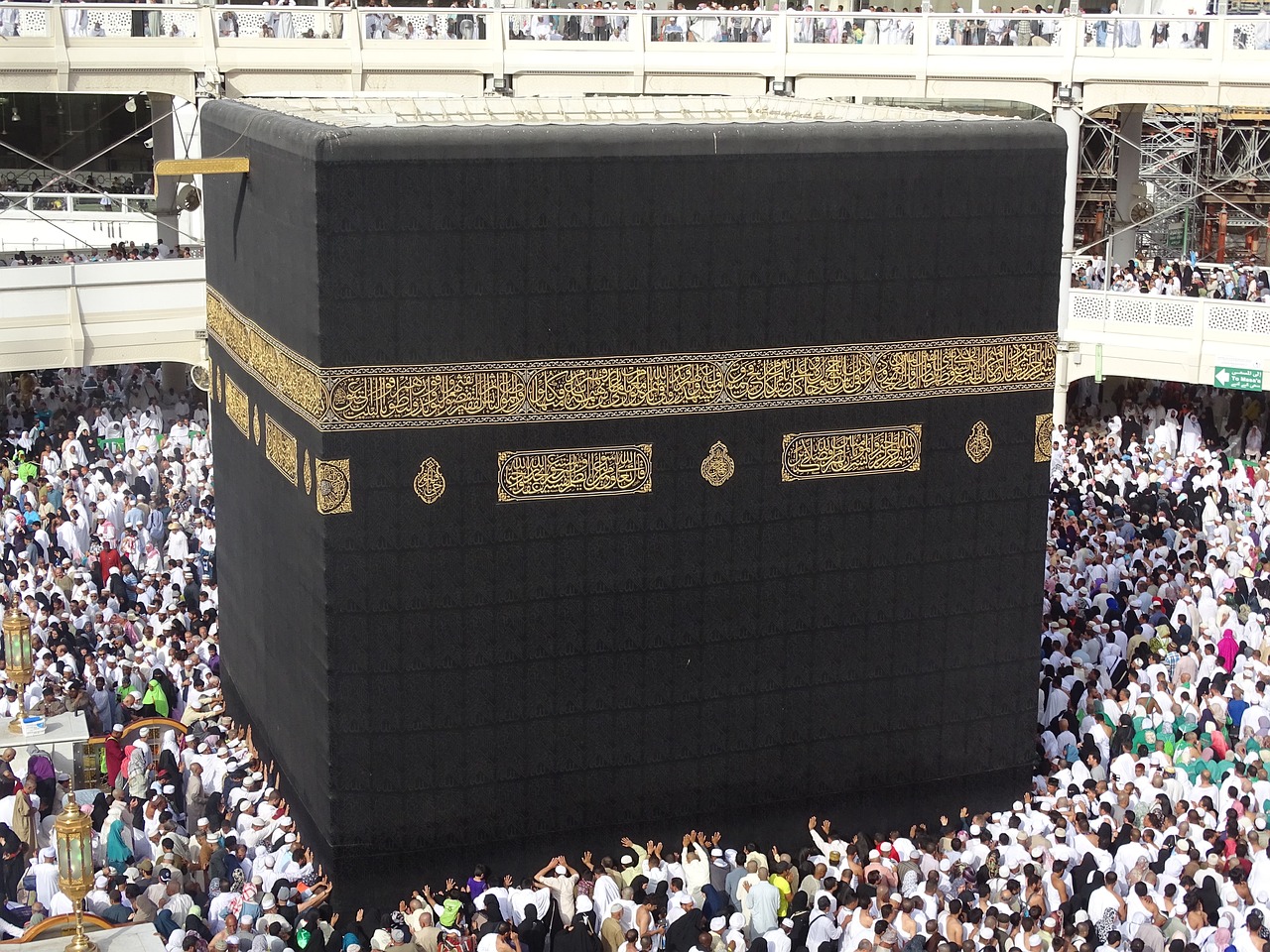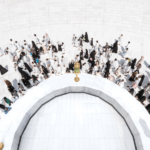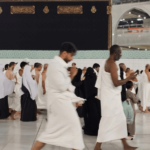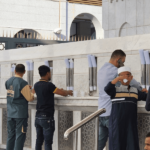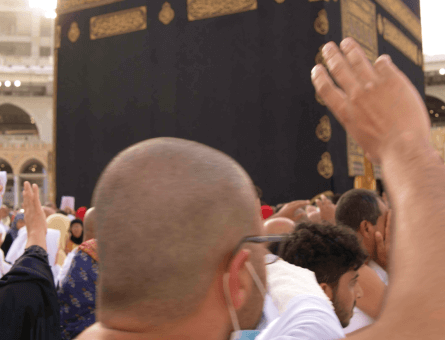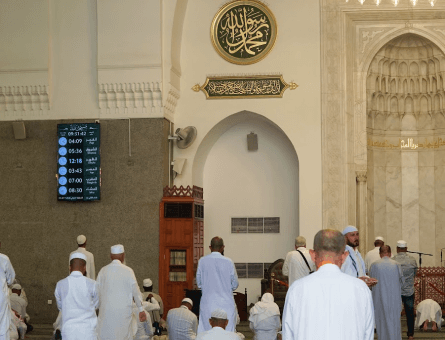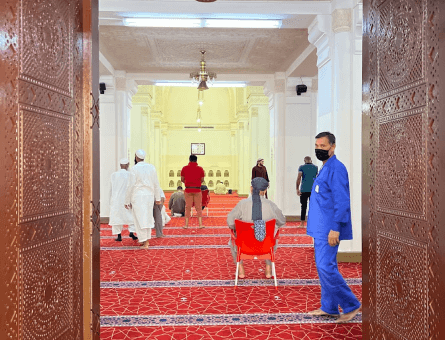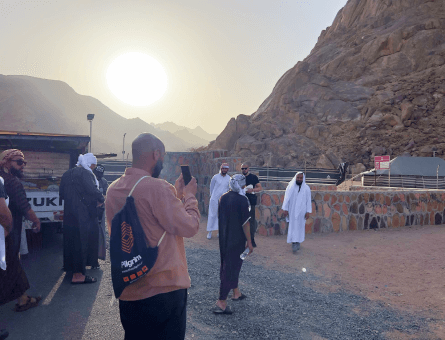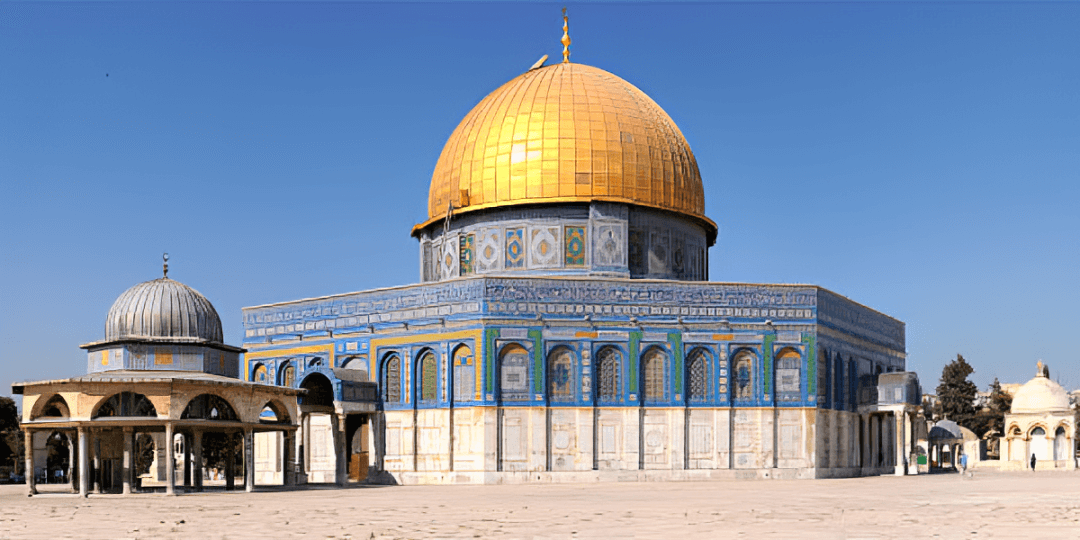Importance of Masjid Al Aqsa – Significance of Al Aqsa for Muslims
“Al-Aqsa” is an Arabic word which means “the farthest sanctuary” or “the farthest mosque.” Located in the Old City of Jerusalem, Palestine, Masjid Al Aqsa is the third holiest site in Islam. Dating back to the early seventh century, Mosque Al Aqsa played a very significant role in the life of Prophet Muhammad (PBUH).
Throughout history, Masjid Al Aqsa has been known as the centre of monotheism and was the home of many prophets (PBUT). It was also the first Qiblah in Islam which later changed to the Holy Kaaba in Makkah, Saudi Arabia. Masjid Al Aqsa is also where Prophet Muhammad (PBUH) led the congregational prayer of all the prophets before departing on the journey to the Heavens.
Want to learn more? Here is everything you need to know about the importance of Masjid al Aqsa, the first Qibla in Islam.
What Makes Masjid Al Aqsa So Special to Muslims around the World?
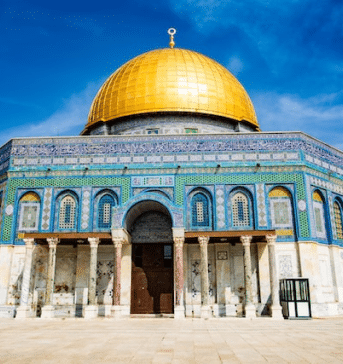 From being the first Qiblah of Islam to the destination where Prophet Muhammad (PBUH) led the congregation prayers of all prophets during the Night Journey (Miraj), Masjid Al Aqsa is one of the most special historical monuments in Islam.
From being the first Qiblah of Islam to the destination where Prophet Muhammad (PBUH) led the congregation prayers of all prophets during the Night Journey (Miraj), Masjid Al Aqsa is one of the most special historical monuments in Islam.
According to Islamic scriptures, the Messenger (PBUH) of Allah SWT instructed his companions to visit three important mosques in their life: Masjid Al-Haram in Makkah, Masjid An-Nabawi in Madinah, and Masjid Al-Aqsa in Jerusalem. This is because prayers performed at any of these three mosques will be rewarded five hundred times more than performing Salah in any other location.
- Masjid Al Aqsa Is the First Qiblah in Islam:
Abdullah Ibn Umar (RA) narrates, “We prayed along with the Prophet (PBUH) facing Al-Quds (Jerusalem) for 16 or 17 months. Then Allah SWT ordered him saw) to turn his face towards the Kaaba (in Makkah).” (Bukhari)
- Masjid Al Aqsa Is Where Allah SWT’s Revelation Descended Upon Prophet Muhammad (PBUH):
Abu Umama (RA) reports that the Prophet (PBUH) said, “Prophethood descended upon me in three places: Makkah, Madinah and Al-Sham. Once it is brought out from any of them, it shall never return to it”. (Abu Dawud) Another narration states, “The Quran was revealed in three places – Makkah, Madinah and Al-Sham”. (Tabarani) Ibn Kathir, the great scholar of Islam, said, “Al-Sham here means Bayt Al-Maqdis or Masjid Al Aqsa (Jerusalem).” (Abu Dawud, Tabarani)
- Prophet Muhammad (PBUH) Was Taken to Masjid Al Aqsa on the Night of Miraj:
Testament to this is the statement of Allah in the Holy Quran, “And We granted the vision (Ascension to the Heavens) which we made you see (as an actual eye witness) was only made as a trial for the people”. [Holy Quran, 17:60]
Ibn Abbas (RA) said, “The sights which Allah’s Apostle was shown on the Night journey where he was taken to Bayt Al-Maqdis (i.e. Jerusalem) were actual sights, (not dreams). And the Cursed tree (mentioned) in the Quran is the tree of Zaqqum.” (Bukhari)
- Masjid Al Aqsa Is the Second House of Allah SWT on Earth:
Abu Dharr (RA) said that he asked the Prophet Muhammad (PBUH), “O Messenger of Allah (PBUH), which Masjid was built first on earth?” The Prophet Muhammad (PBUH) replied, “The Sacred Masjid of Makkah.” Abu Dharr (RA) again asked, “Which was next”? The Prophet (PBUH) said, “Masjid Al-Aqsa.” Abu Dharr (RA) further asked, “How long was the period between the building of the two Masjids?” The Prophet (SAW) said, “Forty years.” “Apart from these, offer your prayer anywhere when it is time to pray, although excellence is in praying in these Masjids.” (Bukhari)
- Virtue about Visiting Masjid Al Aqsa:
Abu Hurayrah (RA) reported that the Prophet Muhammad (PBUH) when asked about the significance of praying in Masjid Al Aqsa said, “You should not undertake a special journey to visit any place other than the following three Masjids with the expectations of getting greater reward: the Sacred Masjid of Makkah (Holy Kabaah), this Masjid of mine (the Prophet’s (SAW) Masjid in Madinah), and Masjid Al-Aqsa (of Jerusalem).”
In another narration the words are, “For three Masjids a special journey may be undertaken: The Sacred Masjid (Kaaba), my Masjid and Masjid of Jerusalem (Al-Aqsa).” (Muslim, Bukhari, Abu Dawood)
- Virtue about Praying in Masjid Al Aqsa:
Anas Ibn Malik (RA) narrated that the Prophet Muhammad (PBUH) said, “The prayer of a person in his house is a single prayer; his prayer in the Masjid of his people has the reward of 27 prayers; his prayer in the Masjid in which the Friday prayer is observed has the reward of 500; his prayer in Masjid Al-Aqsa (i.e. Al-Aqsa Sanctuary) has a reward of 5,000 prayers; his prayer in my Masjid (the Prophet’s Masjid in Madinah) has a reward of 50,000 prayers, and the prayer in the Sacred Masjid (Holy Kaaba) has the reward of 100,000 prayers.” (Tirmidhi, Ibn Majah)
History of Al-Aqsa Mosque
Al Aqsa Mosque was originally built with the intention to have a small prayer house. However, it was brought to the ground and reconstructed by Umayyad Caliph Abd al-Malik and his beloved son al-Walid in 705 CE.
Throughout history (746 CE and 1033 CE), several earthquakes completely destroyed the structure of Masjid Al Aqsa, but each time, the historical mosque was renovated and re-established.
The famed dome, façade, minbar, minarets, and interior of the mosque were all constructed as additions to the mosque by several reigning dynasties of the Islamic Caliphate.
Jerusalem was taken during the Crusades in 1099, and Masjid Al-Aqsa was used as a palace complex until it was retaken in 1187 by Saladin, the first Sultan of Syria and Egypt.
Moreover, the Ayyubid (Mulsim-Kurdish) dynasty, the Mamluk Sultanate (covering the Levant, Hejaz, and Egypt), the Ottoman Empire, the Supreme Muslim Council, and Jordan all ordered modifications and expansions to the mosque.
Al Aqsa Mosque is currently managed by the Jordanian and Palestinian Islamic Waqf.
Who Built Al Aqsa Mosque?
According to the history of Islam, initially, Masjid Al Aqsa was constructed by Prophet Adam (AS). However, after he passed away, the sacred mosque was damaged. It was then that Prophet Ibrahim (AS) who along with his son, Prophet Ishaq (AS), travelled to Jerusalem to find the remains of Masjid Al-Aqsa and reconstruct it. Later, Prophet Ibrahim (AS) started living in the Blessed Land.
After Prophet Ishaq (AS) passed away, his sons left Palestine and migrated to Egypt. Because of this, there was no one to take care of Masjid Al-Aqsa and so the foundation of the holy mosque started to crumble and got severely damaged.
Allah SWT then commanded one of his bravest and strongest messengers, Prophet Dawood (AS) to rebuild Masjid Al-Aqsa. During the construction, Prophet Dawood (AS) used to pray in the compound of the mosque. However, he tragically passed away even before the mosque’s construction was completed.
Soon after the death of Prophet Dawood (AS), his beloved son, Prophet Sulayman (AS) continued construction work. He commanded the Jinns to help him re-build Masjid Al-Aqsa and so the structure that we see today is indeed built by Jinns.
Facts about Al-Aqsa Mosque
Located in the old city of Jerusalem, Masjid Al Aqsa is one of the three most significant mosques in Islam. Here are four lesser-known facts about the blessed site:
First Qibla for Prayer
Since the beginning of Islam, Muslims always prayed while facing towards Masjid Al-Aqsa, Jerusalem. This fact highlights the importance and the special spot that the old city of Jerusalem has in Islam. According to Islamic narrations, even after eighteen months of migration from Makkah to Madinah, Prophet Muhammad (PBUH) and his companions prayed in the direction of the Al-Aqsa Mosque.
It was then on 2nd January, 624 CE when Allah SWT revealed the following verse to Prophet Muhammad (PBUH) during the Zuhr prayer in Masjid al-Qiblatayn. The Almighty said, “Verily, We have seen the turning of your (Muhammad’s) face towards the heaven. Surely, We shall turn you to a Qiblah (prayer direction) that shall please you, so turn your face in the direction of Al-Masjid Al-Haram (at Makkah).” [Holy Quran, 2:144]
As soon as the verse was revealed, the Messenger (PBUH) of Allah SWT, turned around 160 degrees (from the direction of Masjid Al-Aqsa to the Holy Kaaba) in the middle of the congregational prayer and the companions followed.
After this event, Prophet Muhammad (PBUH) informed the Muslims that, “Even though the Qibla has changed this does not reduce the importance of Masjid Al-Aqsa to the Muslims.”
Al-Bara (RA) narrated: “We prayed toward Bait Al-Maqdis (Jerusalem) with the Messenger of Allah (PBUH) for sixteen or seventeen months – Safwan was not sure – then it was changed to the Qiblah.” (An Nasa’i 488)
Third Holiest Mosque in Islam
Mosque Al Aqsa is the third most sacred masjid in Islam. The significance of Mosque Al-Aqsa dates back to the era of Adam (AS). The holy mosque has been mentioned by Prophet Muhammad (PBUH) several times with regards to its virtue.
Abu Darda (RA) relates that the Prophet Muhammad (PBUH) said, “A prayer in Makkah (Holy Kabaa) is worth 1000,000 times (reward), a prayer in my Masjid (Madinah) is worth 1,000 times and a prayer in Al-Aqsa Sanctuary is worth 500 times more reward than anywhere else”. (Tabarani, Bayhaqi, Suyuti)
Masjid Al-Aqsa is the only mosque besides the Holy Kaaba that is mentioned by name in the Holy Quran. “Glorified be He [Allah] Who did take His servant for a journey by night from Al Masjid Al Haram to Al Masjid Al Aqsa, whose precincts We did bless, in order that We might show him some of our Signs. Verily He is the All Hearing, All Seeing.” [Holy Quran, Surah Isra 17:1]
Second Masjid Constructed on Earth
Masjid Al Aqsa was the second-ever mosque that was constructed on Earth by Prophet Adam (AS). Based on Islamic scriptures, the father of all mankind, Prophet Adam (AS) constructed Mosque Al-Aqsa in Jerusalem 40 years after building the Holy Kaaba in Makkah, Saudi Arabia.
This makes Masjid Al-Aqsa the central place for Muslims after Masjid Al-Haram. Throughout the years, Mosque Al-Aqsa was renovated several times by Prophet Ibrahim (AS), Prophet Dawood (AS), and finally Prophet Sulayman (AS) with the help of Jinns.
Abu Dharr (RA) reported that he asked the Prophet (SAW), “O Messenger (PBUH) of Allah SWT, which Masjid was built first on earth?” The Prophet Muhammad (PBUH) replied, “The Sacred Masjid of Makkah.” Abu Dharr (RA) again asked, “Which was next”? The Prophet Muhammad (PBUH) said, “Masjid Al-Aqsa.” Abu Dharr (RA) further asked, “How long was the period between the building of the two Masjids?” The Prophet Muhammad (PBUH) said, “Forty years”. “Apart from these, offer your prayer anywhere when it is time to pray, although excellence is in praying in these Masjids”. (Bukhari)
Masjid Al Aqsa Isn’t Only One Mosque
One fact about Masjid Al Aqsa that a lot of people don’t know is that it isn’t only one mosque. When a person hears the name Masjid Al Aqsa, they think about a historical Islamic monument that is located in the southernmost corner of the mosque.
However, that in fact is the Qibali Mosque as it is closest to the Qiblah. Therefore, the entire complex of that specific area is referred to as Masjid Al Aqsa.
Pictures of Al Aqsa Mosque
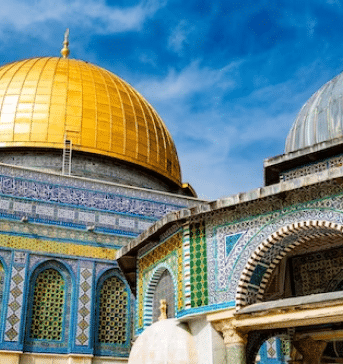
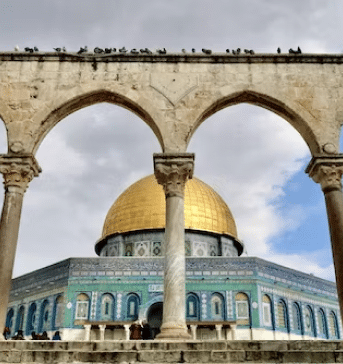
The architecture of Masjid Al Aqsa
According to Islamic history, Masjid Al Aqsa has undergone significant architectural changes. Constructed upon an elevated piece of land, the foundation of Masjid Al Aqsa is supported by arches. Historically, the first renovation of Mosque Al Aqsa took place in 1992 which caused the establishment of the Umayyad Foundation.
They later conserved the drums and arches of the mosque within the interior of its main dome and replaced the southern timber wall with a concrete slab.
However, because of damage owing to earthquakes, Mosque Al Aqsa was renovated once again. The new structure included a rectangular mosque that covered 36 acres of land and was big enough to accommodate 5000 worshippers.
The Byzantine architectural-inspired Dome of Rock was replaced with woodwork plated with enamelwork. New arcades and small columns were built in the Mosque’s hallway and the interior was refined with mosaics and inscriptions from the Holy Quran.
Main Landmarks Near Al Aqsa Mosque
Listed below are some must-visit landmarks near Mosque Al Aqsa:
- Dome of the Rock
- Western Wall
- Temple Mount
- Church of the Holy Sepulchre
- Mount of Olives
- City of David
- Gethsemane
Was Al Aqsa Mosque Built by Jinns?
Following the command of Allah SWT, Prophet Dawood (AS) began the construction of Masjid Al Aqsa. However, because Prophet Dawood (AS) tragically died, his son, Prophet Sulayman (AS) completed the construction of Masjid Al Aqsa with the help of Jinns.
Prophet Muhammad (PBUH) said, “When Sulayman bin Dwood (AS) finished building Bayt al-Maqdis (Masjid Al Aqsa), he asked Allah SWT for three things: judgement that was in harmony with His judgement, a domination that none after him would have, and that no one should come to this Masjid, intending only to pray there, but he would emerge as free of sin as the day his mother bore him.”
The Prophet Muhammad (PBUH) said, “Two prayers were granted, and I that the third was also granted.” (Ibn Majah)
Allah SWT in the Holy Quran says, “There were jinn that worked under his supervision by the leave of his Lord, and if any of them deviated from Our command, We made him taste of the Penalty of Blazing Fire.
They worked for him as he desired, (making) arches, statues, basins as large as reservoirs, and (cooking) cauldrons fixed (in their places): ‘Work, family of Dawood, with thanks! But few of My slaves are grateful!’” [Holy Quran, Surah Saba 34:12-13]
Summary – Importance of Masjid Al Aqsa
Otherwise known as “The Farthest Mosque,” Masjid Al Aqsa is located in the old city of Jerusalem, Palestine. The sacred mosque comprises a dome made of rock, four minarets, and seventeen gates, and is also referred to as “The Noble Sanctuary.”
From the era of Prophet Adam (AS) to Prophet Muhammad (PBUH), Masjid Al Aqsa has been the pivotal point of many significant Islamic events. The Messenger (PBUH) of Allah SWT has instructed the Muslim Ummah to pray inside the mosque as it is a symbol of Allah SWT’s greatness and is one of the three holiest mosques in Islam.
Explore The New Pilgrim App
The Ultimate App
for Hajj and Umrah!




